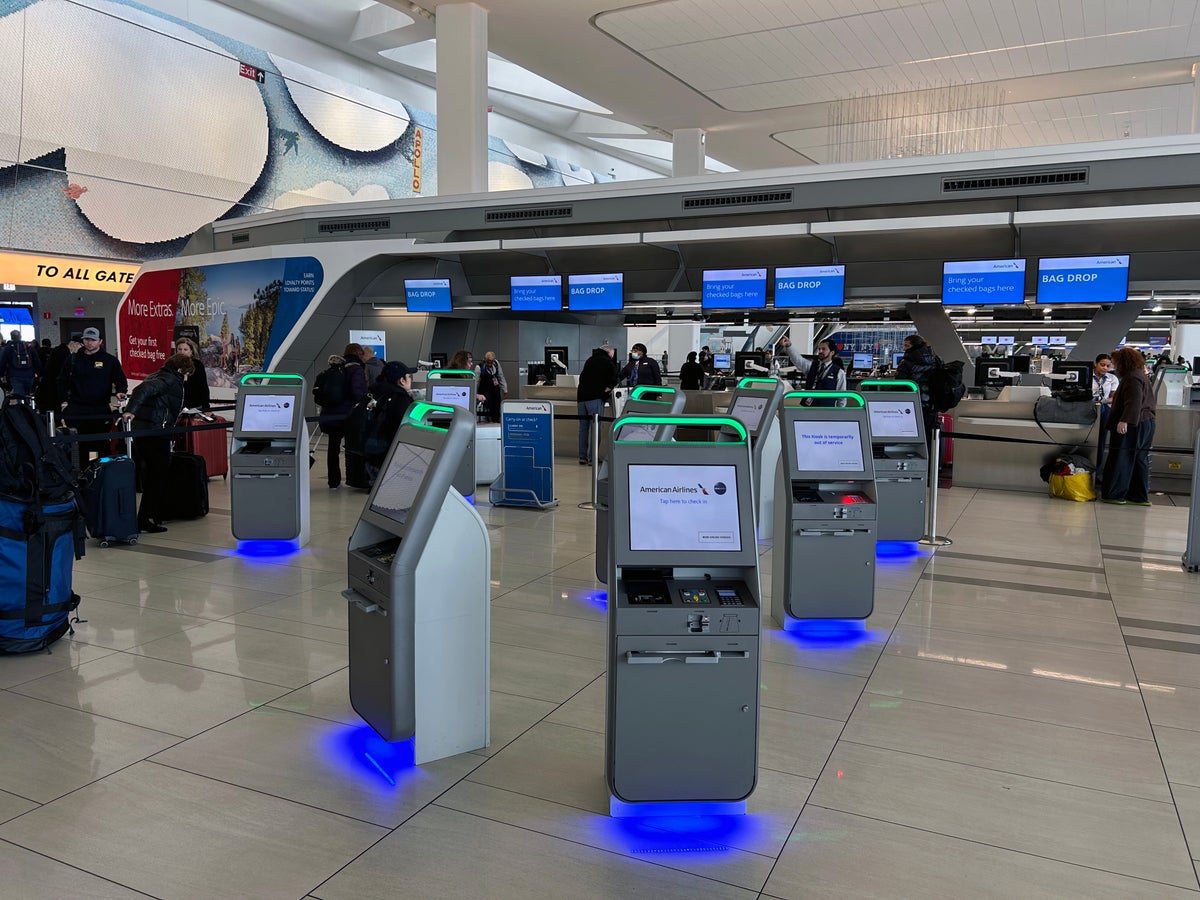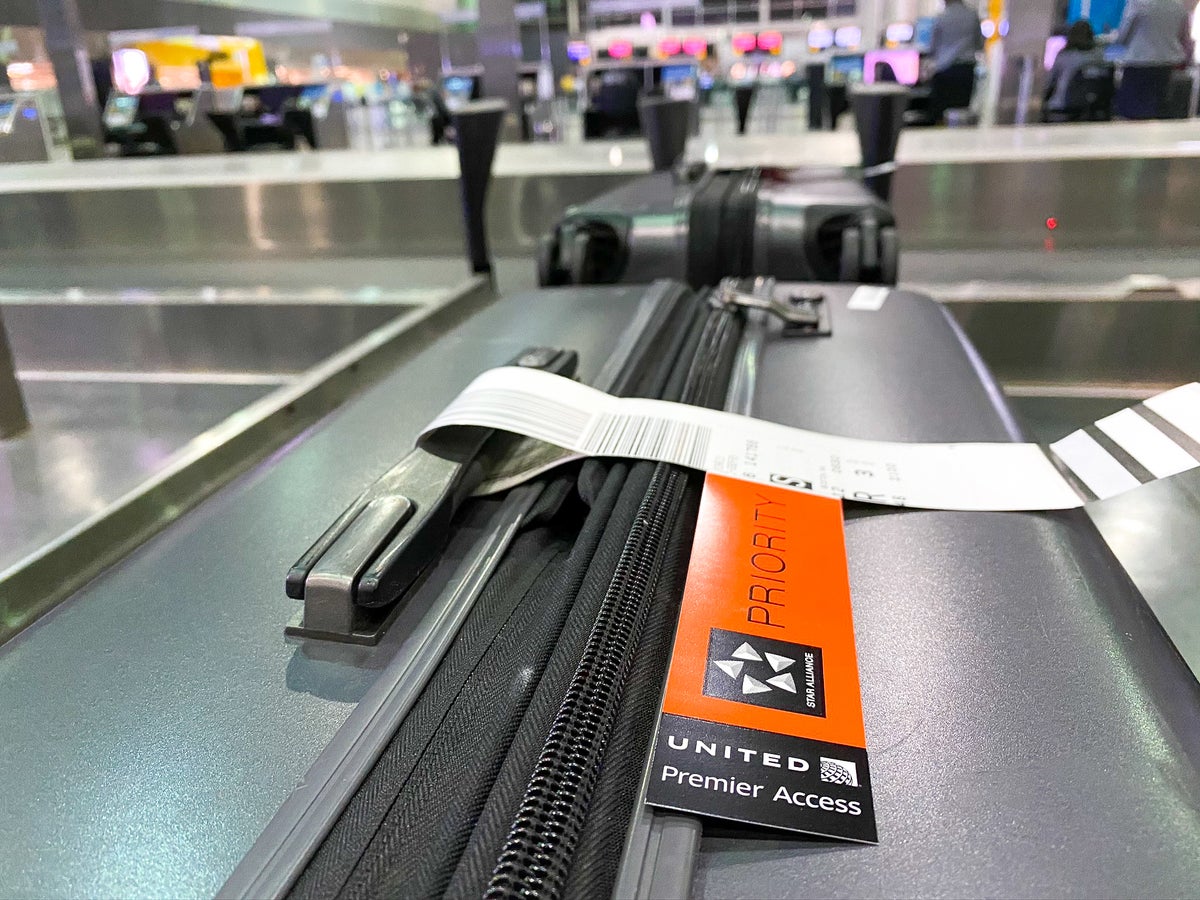Travel
Chase Sapphire Preferred Card Travel Insurance – 10 FAQs [2024]
![Chase Sapphire Preferred Card Travel Insurance – 10 FAQs [2024] Chase Sapphire Preferred Card Travel Insurance – 10 FAQs [2024]](https://upgradedpoints.com/wp-content/uploads/2022/09/Chase-Sapphire-Preferred-Upgraded-Points-LLC-08-Large.jpg)
The Chase Sapphire Preferred® Card remains one of the most popular travel rewards credit cards for numerous reasons. Alongside excellent earning rates and a fair amount of benefits that justify the $95 annual fee, the card also offers numerous shopping and travel insurance benefits.
If you’re like most people, you hear the word “insurance,” and your eyelids start feeling heavy. Let’s be honest: Insurance isn’t thrilling. The terminology can feel confusing, leaving you with many questions about what exactly the travel insurance on your Chase Sapphire Preferred card does and doesn’t cover.
You have questions, and we have answers. Here’s a simple look at your most common questions about travel insurance on the Chase Sapphire Preferred card.
Chase Sapphire Preferred Card Overview
A fantastic travel card with a huge welcome offer, good benefits, and perks for a moderate annual fee.
Learn More(at Chase’s secure site)
$1,200
21.49%-28.49% Variable
- Earn 60,000 bonus points after you spend $4,000 on purchases in the first 3 months from account opening. That’s $750 when you redeem through Chase Travel℠.
- Enjoy benefits such as 5x on travel purchased through Chase Travel℠, 3x on dining, select streaming services and online groceries, 2x on all other travel purchases, 1x on all other purchases, $50 Annual Chase Travel Hotel Credit, plus more.
- Get 25% more value when you redeem for airfare, hotels, car rentals and cruises through Chase Travel℠. For example, 60,000 points are worth $750 toward travel.
- Count on Trip Cancellation/Interruption Insurance, Auto Rental Collision Damage Waiver, Lost Luggage Insurance and more.
- Get complimentary access to DashPass which unlocks $0 delivery fees and lower service fees for a minimum of one year when you activate by December 31, 2024.
- Member FDIC
Financial Snapshot
- APR: 21.49%-28.49% Variable
- Foreign Transaction Fees: None
Card Categories
Rewards Center
Recap of Chase Sapphire Preferred Card Travel Insurance
Before moving any further, let’s ensure you’re familiar with the long list of travel protections built into the Chase Sapphire Preferred card:
- Auto rental collision damage waiver
- Baggage delay insurance
- Lost luggage reimbursement
- Travel accident insurance
- Trip cancellation and trip interruption insurance
- Trip delay reimbursement
You’ll also enjoy several other cardholder benefits and protections beyond travel insurance:
- Extended warranty protection
- No foreign transaction fees
- Purchase protection
- Roadside dispatch
- Travel and emergency assistance
Some of the benefits seem more obvious than others. And, as with all insurance, there are always specific terms to understand, exclusions to mind, and coverage limits. Let’s clear some of those up.
1. What Flight Insurance Does the Chase Sapphire Preferred Card Have?
When flying, you’ll have 2 types of insurance: travel accident insurance and trip cancellation and interruption insurance. Both types are in effect for trips for which you paid at least a portion of the cost with your Chase Sapphire Preferred card. Let’s look at each benefit.
Travel Accident Insurance
Travel accident insurance applies to you and your immediate family members if one of you becomes permanently injured or dies while traveling. The cardholder benefit guide lists specific dollar amounts that you can be paid for specific injury types. The coverage is further divided into 2 categories: traveling on a common carrier and 24-hour coverage.
Coverage related to a common carrier covers both injuries and death resulting from your travel on a licensed air, land, or sea transport that regularly carries paying passengers. Think planes and ferries, for example. You’ll also be covered while at an airport, terminal, or station immediately before or after a trip, including courtesy transport to or from these places if provided as part of your trip. If your flight booking includes the airline picking you up from the hotel, this could be covered if all other conditions are met.
The 24-hour coverage applies around the clock and is valid on trips of up to 30 days. If you take a trip longer than this, coverage will end 1 minute after midnight on the 31st day, though it would come back into effect when you are in transportation to the airport for your flight home. If you drive yourself to the airport, coverage should resume once you are inside the airport.

Trip Cancellation and Interruption Insurance
This benefit reimburses you for the money you lose when a trip paid for (in whole or part) with your card is interrupted or canceled. Trip interruption is when you’ve started the trip and must end it early for a covered reason; trip cancellation applies to canceling a trip before it begins. The maximum benefit payout here is $10,000 per person and up to $20,000 per trip. Both the cardholder and immediate family members are covered.
Trip cancellation coverage begins when you make your first deposit toward the trip and ends when you depart on your scheduled departure date. Trip interruption starts on your scheduled departure date and ends on your scheduled return date. However, if these dates or times are adjusted for reasons beyond your or the carrier’s control, the benefit will adjust automatically.
What expenses are reimbursable? They include nonrefundable, prepaid travel expenses by a licensed supplier, such as a travel agency, hotel, shore excursion agency, etc. When canceling for a covered reason, you’re also covered for redeposit fees to get your airline miles back. Unfortunately, this benefit doesn’t cover lost money you paid for tickets to shows or theme parks, tee times at golf courses, museums, or other entrance fees unless they’re part of a tour package.
You’ll be covered for a few more situations with trip interruption coverage only. These include fees for returning a rental car early or to the nearest facility and up to $250 of expenses to transport you for necessary medical treatment. However, that doesn’t include medical transport (such as ambulances or medevac).
What if you paid with Chase Ultimate Rewards points and are due a refund under these benefits? You’ll be reimbursed according to the value on your travel supplier’s confirmation receipt, assuming that’s listed. If there’s no trip value listed on the receipt after you paid with points, you’ll be reimbursed at a value of 1 cent per point.
Covered Reasons
Not every reason for canceling a trip or ending it early is covered under these benefits. Covered reasons include accidental death or injury, a sickness requiring hospitalization, severe weather, a named storm warning, a change in military orders, a subpoena or call to jury duty, your home being burglarized or becoming uninhabitable, your hotel becoming uninhabitable, a public transportation strike that makes you miss 20% of a trip or a scheduled tour departure, and more. Consult the Chase Sapphire Preferred card benefits guide to see if your specific cancellation or interruption reason is covered.
Bottom Line:
Trip cancellation insurance doesn’t cover everything. For example, changing your mind about a trip is not covered. If your plans are subject to change, you may want to purchase Cancel for Any Reason (CFAR) travel insurance.
2. Does Chase Sapphire Preferred Card Travel Insurance Cover Cruises?
This part is a bit confusing, but yes. Chase’s benefits guide for the Chase Sapphire Preferred card states explicitly that cruise lines aren’t included in the definition of a “common carrier.” However, cruise lines are included in the definition of a “travel supplier.”
Why does this matter? Many of the trip cancellation and trip interruption benefits only apply to travel with a common carrier, which doesn’t include cruise lines. However, some benefits do apply to cruises. These include stolen luggage benefits or even canceling a trip if delays mean you’ll miss at least 20% of the trip or that you’ll miss the departure of your cruise ship.
The travel accident and injury benefits also apply while you’re cruising, but it’s worth noting that returning late to your cruise ship, only to find it’s left for the next island without you, isn’t a covered expense. You’ll be on your own for the costs of catching up to your ship.
3. What Does the Chase Sapphire Preferred Card Baggage Insurance Cover?
There are 2 types of baggage protection here: coverage for delayed bags and coverage for lost, stolen, or damaged luggage. Baggage delay insurance covers up to $100 per day for up to 5 days when your bags are delayed by at least 6 hours, covering each additional 24 hours past that until the maximum of 5 days is reached. This benefit applies to you and your immediate family members when you pay for at least part of your trip with your Chase Sapphire Preferred card. You don’t need to be traveling with your immediate family members for them to be covered, as long as at least part of their trip was paid for with your card, which can be a nice perk if you book travel for relatives.
Coverage begins on the scheduled departure date and ends on the scheduled return date, though coverage adjusts automatically if there are changes outside your or the travel provider’s control. There’s also a list of non-covered items, such as medical devices, losses due to war/conflict, electronics, and cash equivalents. In case of baggage delay, you must report it to the travel provider as soon as possible and keep receipts for necessary expenses you incur; you’ll submit these for reimbursement afterward.

Lost luggage reimbursement is different; it covers lost, stolen, or damaged luggage during your trip. Both checked and carry-on bags are covered up to a maximum of $3,000 per person per trip. However, there’s a limit of $500 for jewelry, watches, and electronics.
There are some specifics to understand about this coverage, however. First, it doesn’t cover items you leave behind by accident. Second, coverage applies to you and immediate family members (even if you aren’t traveling with them) so long as you paid for at least part of the trip with your Chase Sapphire Preferred card. Coverage is available from the scheduled start to the scheduled end of your trip, but it is automatically adjusted if there are uncontrollable delays to either date.
Coverage applies to common carriers and cruise lines, and you must report the loss, theft, or damage within the timeframe specified by your travel provider. Then, the coverage on your Chase Sapphire Preferred card will cover any difference in the value of your monetary loss (after depreciation of the items) and the payment you receive from the travel provider. Thus, this is secondary coverage. It’s worth noting that documents, furs, tickets, and cash-like items aren’t covered.
4. What Does the Chase Sapphire Preferred Card Medical Insurance Cover?
Accidents can happen on any trip, from accidentally slipping on the wet deck of a cruise ship to spending nights in a hospital at a far-flung destination. Does your health insurance at home cover you when you head to Florida? What about South America? These are questions worth asking. If your medical coverage won’t be in effect, it’s worth considering medical travel insurance.
The Chase Sapphire Preferred card includes travel accident insurance for you and your immediate family members. It’s in effect if you pay at least part of the airfare for your trip with this card. You’ll receive varying maximum payouts depending on the type of injury (or death) encountered during your trip, and the maximum limit also depends on whether the accident occurs while traveling on a common carrier or at some other point during your trip. The 24-hour benefit provides maximum coverage of $100,000, increasing to $500,000 when traveling on a common carrier.
But how does this work in practice?
If more than 1 person is injured, the benefits administrator will pay no more than 2 times the maximum limit for each type of injury. That sum will be divided among all covered persons eligible for benefits payments.
In case of death, the benefits administrator will give the money to your named beneficiary. If you haven’t named a beneficiary, the order of preference goes from a spouse or domestic partner to children, then parents, siblings, and finally, your estate. If you go missing and haven’t been found after a year, then this will trigger the “loss of life” benefit.
Coverage begins either when you reach the airport, station, or terminal for travel on a common carrier or when you enter courtesy transportation provided to take you to the point at which your trip begins, such as a train station or airport. If you didn’t buy your tickets in advance but are purchasing them when you arrive at the station, coverage begins once you make the payment for travel. Coverage ends after you leave the transportation vessel or exit the courtesy transportation provided afterward.
The 24-hour coverage functions a bit differently. It’s in effect around the clock for up to 30 days, starting from your scheduled departure for air travel. If your trip is longer than 30 days, coverage will pause 1 minute after midnight on the 31st day and resume when you reach the airport for a flight home or are in courtesy transportation to the airport for the flight home.
Obviously, there are exclusions. You aren’t covered if you’re a pilot or crew member on a flight, you get injured while committing a crime, you get injured while skydiving, your injury is self-inflicted, or you’re injured in a war.
Lastly, you may wonder how COVID-19 factors in. The benefits guide says this under covered losses: “Quarantine of you or your traveling companion imposed by a physician or a competent governmental authority having jurisdiction, due to health reasons.”
Thus, your illness could be covered if a doctor or government requires quarantine related to COVID-19. COVID-19 is generally covered under most travel insurance policies in the same way sicknesses are covered. However, not traveling to avoid COVID-19 risks isn’t covered. As the benefits guide says, “Your disinclination to travel, a country closing its borders, or a travel supplier canceling or changing travel arrangements due to an epidemic or pandemic.”
5. Does the Chase Sapphire Preferred Card Cover Hotel Cancellations?
Hotels aren’t treated separately under the Chase Sapphire Preferred card travel insurance terms. If you must cancel or interrupt a trip for a covered reason, then your hotel cancellation fees can be covered. This would include situations like forfeiting a first night’s room cost for canceling your hotel booking at the last minute, assuming you couldn’t arrive for a covered reason, such as a travel delay or a last-minute injury that made you unable to travel.

6. Does the Chase Sapphire Preferred Card Cover Airbnb Cancellations?
While you won’t find the word “Airbnb” or even “vacation home” in the benefits guide, you will find a description that covers these types of rentals:
“Provider of Lodging – a hotel, inn, motel, bed and breakfast, or hostel; a Provider of Lodging includes non–commercial time shares, condominiums, or rentals of a private residence; such rental shall require a written contract between You and the property owner or management company, executed in advance of the commencement of the rental period …”
Chase Sapphire Preferred card benefits guide.
So long as you’ve reserved your rental in advance and have a written contract — which Airbnb provides at the time of booking, courtesy of your confirmation details — your vacation home rental should count as a type of lodging. The contract must state the cancellation provisions, must not include a rental of more than 60 days, and your booking must be made directly with a licensed website or agent — not with the homeowner directly (unless that person is a licensed agent).
Airbnb is a covered lodging type, meaning your booking should qualify for trip interruption, trip cancellation, and trip delay coverage.
7. Does Chase Sapphire Preferred Card Travel Insurance Cover Rental Cars in Other Countries?
In short, yes. However, there are some exclusions. Since your personal auto insurance policy may not cover you abroad, it’s great to know that paying with your Chase Sapphire Preferred card and declining the rental company’s collision damage waiver can provide protection on your next rental.
You can be covered up to the actual cash value of most rental cars against theft or collision damage. Coverage can include administrative fees, loss-of-use charges, and even towing charges. Coverage applies to rentals up to 31 days and covers you plus any additional drivers listed on the rental contract.
You’ll need to use your card (or your points) to pay for the entire cost of the rental, and most vehicle types are covered by this primary insurance. However, coverage doesn’t apply to exotic or antique cars, high-value vehicles, cargo vehicles, motorcycles, RVs, or vans with seating for more than 9 people (including the driver). Note that Teslas qualify as high-value vehicles, so these aren’t covered.
The benefits guide doesn’t spell out any specific excluded countries. However, Visa typically excludes coverage in Israel, Jamaica, and Northern Ireland, plus you may not be able to use your card to pay for a rental (and thus coverage won’t be in effect) with U.S. Treasury Department monetary embargoes. These destinations include places where your credit cards won’t work, such as Cuba, Sudan, Syria, and North Korea.
8. Does the Chase Sapphire Preferred Card Cover Turo or Zipcar Rentals?
Unfortunately, no. Because Turo and Zipcar rentals aren’t considered rentals from a rental car agency, most credit card rental car insurance doesn’t cover them.
9. How Do I File a Chase Sapphire Preferred Card Travel Insurance Claim?
To file a claim, you should first gather all of the documents related to your claim. These can include receipts, accident reports, police reports, photos, hospital records, or anything else pertinent to the type of claim you’re making.
Next, you can call the benefits administrator at 866-390-9735 or visit eclaimsline.com to submit online. Different claims have different required timelines. For example, auto claims must be filed within 100 days of the incident. However, you need to file within 90 days for baggage delays or losses, but you’re supposed to contact the benefits administrator within 20 days of these incidents to at least provide notice, even though you have 90 days to finish submitting the claim.
10. Do I Need Travel Insurance if I Have the Chase Sapphire Preferred Card?
This question will be subjective, and different people will arrive at different conclusions. Travel insurance can be useful for the unexpected, but no 2 trips are equal. The best way to decide whether you need additional insurance beyond what the Chase Sapphire Preferred card offers is to look at what it doesn’t cover.
Will you be skydiving? Do you have significant trip expenses related to Turo rentals or short connections that could cause domino effects if you miss a departure time? Are you renting an RV or going camping — types of travel not covered by the Chase Sapphire Preferred card?
If you have prepaid, nonrefundable expenses that wouldn’t be reimbursed by your credit card’s travel insurance in the event of delays or cancellations, getting a travel insurance policy that covers these could be a good idea and could provide peace of mind. That said, not every travel activity is covered by every travel insurance policy, so you want to make sure you choose a policy that covers your expenses for your particular trip.
If you look at your trip and decide that your flights, hotel plans, and simple plan of just relaxing at the beach will be covered by the Chase Sapphire Preferred card, then purchasing an extra policy probably isn’t necessary.
Final Thoughts
The Chase Sapphire Preferred card offers numerous protections for purchases and trips. Insurance terms can feel confusing, but hopefully, the explanations of these policies should clarify what is and isn’t covered, as well as policy limits, in a way that helps you know whether the coverages are sufficient for your upcoming travels.
Want to learn more about what else this card offers beyond travel insurance? Consult our full Chase Sapphire Preferred card review.










